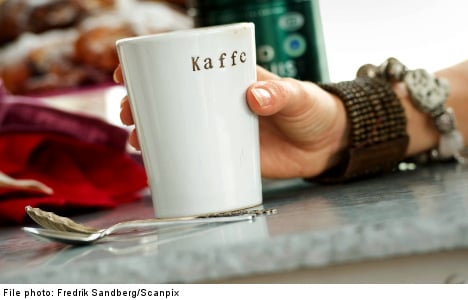OFFBEAT
Stockholm man poisoned by cleaning fluid coffee
A Stockholm-area man was taken to hospital after gulping down coffee from a machine that laced the drink with cleaning fluid.
Published: 31 October 2013 08:54 CET

The incident occurred last Thursday after Fredrik Sjöström picked up a cup of coffee to-go from a machine at an Ica supermarket in Sundbyberg.
After returning to his office, Sjöström settled into his chair and proceeded to take a large gulp from the cup, only to be given a painful and foul-tasting shock.
"It was like drinking chlorine," he told the Aftonbladet newspaper.
When he returned to the shop to complain, employees discovered that a tube in the coffee machine meant to put milk in customers' freshly poured java had instead been connected to a container filled with corrosive cleaning fluid.
"They offered me 15 kronor ($2.35) as compensation for the ruined coffee," he told the paper.
Sjöström then went to Danderyd hospital for treatment, but when doctors discovered the extent of the injuries caused by the caustic coffee, he was rushed to Karolinska hospital by ambulance for specialist care. The poisoned coffee left him with chemical burns to his throat and stomach that continued to plague him a week after downing the corrosive mix.
The store owner later called the mishap a "serious mistake" and promised to fully reimburse Sjöström for his "pain and suffering".
The incident comes just days after a group of students in central Sweden were reported to police for poisoning their teachers' coffee.
TT/The Local/dl
Url copied to clipboard!


 Please whitelist us to continue reading.
Please whitelist us to continue reading.
Member comments